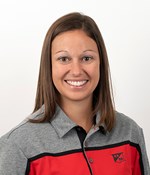Product and Agronomy Research (PAR) Results: Soybean Rolling
BY Dairyland Seed Agronomy Team
SOYBEAN ROLLING
Description:
Intentional damage to the terminal growing point of soybeans is believed to increase branching and produce more nodes from which pods may develop. These practices are often brought up at meetings anecdotally and some claim to have seen increases in yield. We will look at rolling soybeans at the V2-V3 growth stage and determine if this practice increases yield.
Wabash, IN
DSR-3177E™ and DSR-3587E™ were planted on April 27th at 130,000 seeds per acre in 30-inch rows.
Treatments:
- Untreated
- Roll soybeans at V2-V3 growth stage
Mt. Hope, WI
DSR-2188E™ and DSR-2562E™ were planted on May 11th at 120,000 seeds per acre in 30-inch rows.
Treatments:
- Untreated
- Roll soybeans at V2-V3 growth stage
Results:
Soybean Rolling Results for Mt. Hope and Wabash
|
Variety |
Roll Yield |
No Roll Yield |
Advantage |
|
DSR-2188E™ |
74.3 |
79.7 |
-5.4 |
|
DSR-2562E™ |
77.7 |
71.1 |
6.6 |
|
DSR-3177E™ |
70.3 |
67.0 |
3.3 |
|
DSR-3587E™ |
73.2 |
72.7 |
0.5 |
|
Average |
73.9 |
72.6 |
1.3 |
Conclusion:
Soybeans that were rolled had the application during the heat of the day while the plant was limber, to avoid breaking the plants off at the soil line. The results indicate a slight 1 bushel per acre average advantage to rolling. However, individual results by variety show a large range in the advantage to rolling. The lack of consistency indicates that other yield determining factors, such as weather, could have a larger play than the rolling treatment. A similar study was conducted last year at the Wabash location that looked at the effect of a mowing treatment and a rolling treatment on DSR-3177E™ and DSR-3587E™. That study found no yield gain or loss with the treatments, except with DSR-3587E™ that were mowed and were also border rows. Soybean plants have an exceptional ability to compensate for loss or damage to the main growing point by growing through the axillary buds. Still, the amount of yield at the end of the season is heavily influenced by nutrient availability and growing conditions.
 |
 |
 |
 |
 |
| Brian Weller Western Region 507.456.3034 |
Dan Ritter Central Region 219.863.0583 |
Branden Furseth Northern Region 608.513.4265 |
Mark Gibson Eastern Region 260.330.8968 |
Amanda Goffnett Eastern Region 989.400.3793 |
